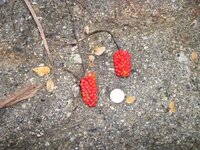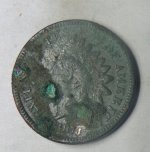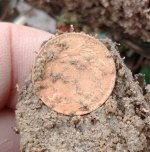oddrock
Hero Member
- Apr 7, 2010
- 560
- 86
- Detector(s) used
- Garrett , Minelab ,White's, others and B.S. sniffer
Can anyone identify this plant for me. Was growing in a river bottom, very little plant attached. Thanks in advance.(US quarter for size comparison)solved
Oddrock
Oddrock



 Here I do though from time to time while out and about.
Here I do though from time to time while out and about. 
![rhus_copallina01[1].jpg](/data/attachments/438/438694-4ce3dafe06b7e17d7ab028fe4bc8eab6.jpg)
![jack-in-the-pulpit-04[1].jpg](/data/attachments/438/438748-e0c095f380313e515f18c11c9c113988.jpg)
![Jack-in-pulpit[1].jpg](/data/attachments/438/438758-2867570c56e5a4d7d3b6f8cfc0f2d004.jpg)
 Yea it's not the type I'm talking about.
Yea it's not the type I'm talking about. 





